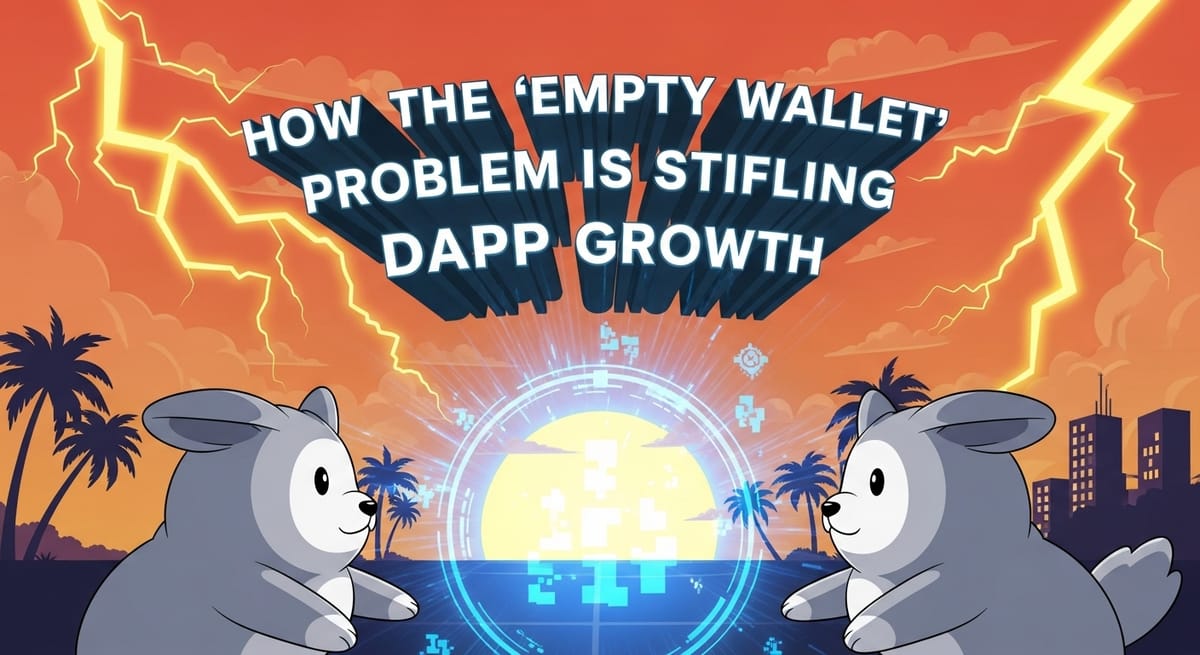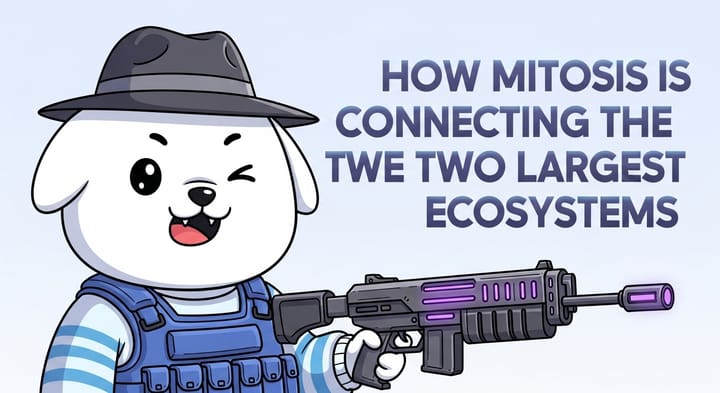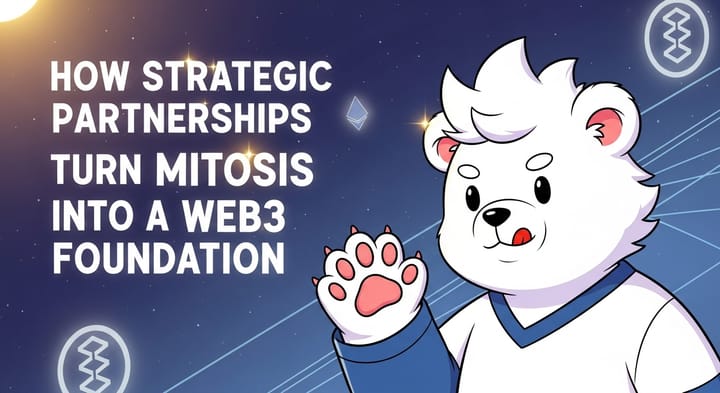Conversion Killer: How the "Empty Wallet" Problem is Stifling dApp Growth

1. Introduction: The Silent Killer of Multichain Growth
Imagine you're a decentralized application (dApp) developer. You've spent months building an innovative DeFi protocol, an exciting GameFi experience, or a unique NFT marketplace. Your application runs on a modern, fast, and cheap Layer 2 blockchain, for instance, Base. You launch a marketing campaign, gain traction on Twitter, and users start flocking to your site.
And here's what most of them see: "Balance: 0.00".
This is the "empty wallet problem" – one of the quietest yet deadliest killers of conversion and growth in today's multichain world. A user might be thrilled with your application, but if all their assets (ETH, USDC, NFTs) are on another network (like Arbitrum, Polygon, or Ethereum Mainnet), a huge chasm opens up between them and your dApp.
Anatomy of the "Chasm": Why Do Users Leave?
For a user facing an "empty wallet" on your dApp, the path to start using it looks like an obstacle course:
- Realizing the problem: "Ah, I need to fund my wallet on the Base network."
- Finding a solution: "Which bridge should I use to transfer from Arbitrum to Base? Is it secure? What are the fees?"
- Leaving your dApp: The user leaves your site to find and use a bridge.
- Bridge complexities: They figure out a new interface, sign transactions.
- The gas problem: "Oh, and I don't have any ETH on Base to pay for gas for my first transaction in your dApp." Another dead end.
- Potential distraction: During all these maneuvers, they might see something else, get a notification, or simply lose interest.
Each of these steps is a point where you lose a potential user. The probability that an average, not-so-tech-savvy user will complete this entire journey is extremely low. As a result, your great product remains unused, and your marketing budget is wasted.
Mitosis: A Bridge Over the "Conversion Chasm"
What if, instead of this complex obstacle course, the user saw one simple button in your dApp: "Deposit from another network"?
This is precisely the solution made possible by integrating with the cross-chain liquidity protocol, Mitosis. Mitosis can act as an "invisible" bridge, embedded directly into your application, that allows users to fund their balance and start using your dApp in minutes, without ever leaving your interface.
How does Mitosis solve the "empty wallet" problem?
- Eliminates the need to search for a bridge: The user doesn't have to go anywhere. All transfer logic is encapsulated within your application.
- Provides security and trust: As a developer, you choose to integrate one reliable and secure protocol (Mitosis with its AVS protection), saving the user from having to assess the risks of dozens of different bridges themselves.
- Supplies liquidity: Thanks to the EOL model, Mitosis ensures the availability of liquidity for fast transfers, making the process smooth and predictable.
- Simplifies onboarding: The process of funding a balance from another network becomes as simple as topping up an account in a regular Web2 application.
What Will You Learn From This Article?
In this article, we will explore in detail how Mitosis can become your greatest ally in the battle for users and their capital in the multichain world:
- We will analyze how integrating Mitosis can dramatically increase user conversion and retention for dApps.
- We will look at a specific example of what a "one-click" user journey for a cross-chain deposit might look like.
- We will discuss why Mitosis is not just a technology protocol, but a B2B growth tool that helps dApps solve real business problems.
We will show that in the multich-chain era, the winners are not only those with the best product, but also those who make the path to that product as short and simple as possible for the user.
2. Mitosis Integration: From Theory to Practical Benefits for dApps
Understanding the "empty wallet" problem is half the battle. Now, let's look at how, in practice, integrating with Mitosis becomes a powerful growth tool and what specific advantages it offers to decentralized applications.
The "One-Click" User Journey: How It Works
Let's imagine our dApp on the Base network. A new user, with all their funds on Arbitrum, visits our site.
- Detecting the Empty Balance: Our application determines that the user's balance on the Base network is zero. Instead of just showing "0.00 ETH," the interface displays a friendly message: "It looks like you don't have any assets on Base yet. Would you like to deposit from another network?" with a "Deposit" button.
- The Mitosis Widget: Upon clicking the "Deposit" button, a simple and intuitive widget (or an embedded interface) developed by Mitosis opens. The user does not need to leave our site.
- The widget automatically detects which networks the user has assets on (e.g., Arbitrum, Optimism).
- The user selects the source network (Arbitrum) and the asset they want to transfer (e.g., ETH or USDC).
- The interface clearly shows how many assets they will receive on the Base network, including all fees.
- Confirmation and Execution: The user enters the amount and signs a single transaction in their wallet to send the funds to the Mitosis protocol on Arbitrum.
- The "Under the Hood" Magic: Mitosis takes care of all the complex work: secure message passing, verification via AVS, and fast issuance of liquidity from EOL to the user's wallet on the Base network.
- The Result: After a few minutes, our dApp's interface updates, showing the funded balance. The user is ready to go.
The Outcome: We've transformed a complex, multi-step process that would have resulted in a 90% user drop-off into a simple and intuitive experience, comparable to funding an account in a fintech app.
Measurable Business Benefits for dApps
Integrating Mitosis is not just a UX improvement; it has a direct impact on the key business metrics of any dApp:
- Increased Conversion: Eliminating the main barrier on the user's path from "interested" to "active user" can increase new user conversion by orders of magnitude. Every user who previously left due to complexity now has a chance to become an active participant in your ecosystem.
- Increased Total Value Locked (TVL): By providing users with an easy way to transfer capital from other networks, you gain access to a much larger pool of liquidity. Your TVL is no longer limited to the capital that is already on your "home" network.
- Improved Retention: By offering built-in cross-chain features, you make your application "stickier." Users don't need to leave for other platforms to manage their multichain assets, which increases the likelihood that they will stay and continue to use your product.
- Reduced Reputational Risk: Independently integrating with little-known or insufficiently audited bridges is a huge reputational risk. In the event of such a bridge being hacked, users will associate the loss of funds with your dApp. By offloading this responsibility to Mitosis, which specializes in security and uses cutting-edge technology (AVS), you protect your brand and your users.
- Saving Development Resources: Instead of spending time and money researching, integrating, and maintaining multiple bridges, your team can focus on developing the core product, using Mitosis as a ready-made infrastructure solution.
Conclusion: Mitosis as a Growth Partner
In today's multichain world, the "empty wallet" problem is not a technical trifle but a fundamental business barrier that is holding back the growth of the entire Web3 industry. Solving this problem requires not just "another bridge," but a comprehensive, secure, and easy-to-integrate infrastructure solution.
Mitosis offers itself in precisely this role. For dApps, it becomes not just a protocol, but a strategic growth partner. By integrating Mitosis, projects gain a powerful tool for attracting and retaining users, increasing TVL, and reducing risks.
The future of Web3 belongs to applications that can offer their users a truly simple and seamless experience, abstracting away all the complexity of blockchain interactions. Mitosis provides a key component for building this future, turning the "conversion chasm" into a wide and convenient bridge for millions of new users.
Learn more about Mitosis:
- Explore details on the official website: https://www.mitosis.org/
- Follow announcements on Twitter: https://twitter.com/MitosisOrg
- Participate in discussions on Discord: https://discord.com/invite/mitosis
- Read articles and updates on Medium: https://medium.com/mitosisorg
- Blog: https://blog.mitosis.org/



Comments ()